I was driving on a snowy Maligne Road a number of years ago—one of those crisp winter days that make you glad you live in Jasper—when I spied a set of wolf tracks crossing the road.
I stopped for a better look, and I had just crouched down to look at the tracks when I heard howling nearby. In my mind there are few sounds in this world that are more inspiring or exciting. Hearing a wolf howl never fails to induce a kind of euphoria, an acoustic reminder that we share a landscape with these beautiful predators. When the wolf appeared, I got back in my car and watched. He serenaded me for several minutes before slipping silently into the forest.
Ain’t nothing but a hound dog
Gray wolves (Canis lupus) are large predators which cooperate in packs to hunt prey—prey that is often larger than themselves. Wolves are widespread, found in North America, Europe, Asia and the Middle East, and they live in a wide variety of habitats, including forests, mountains, tundra, grasslands and deserts. Wolves are members of the dog family (Canidae), meaning they are related to animals like coyotes, foxes, and domestic dogs—but also to a whole bunch of tropical animals that we rarely think about: dholes, bush dogs, maned wolves, African painted wolves, jackals, and many others. World-wide, our gray wolves can be split into as many 28 subspecies, although as usual with taxonomists, there is considerable bickering about the exact number. Wolves can range in size from the little Arabian wolf (about 45 pounds) to the large Russian wolves (as much as 172 pounds).
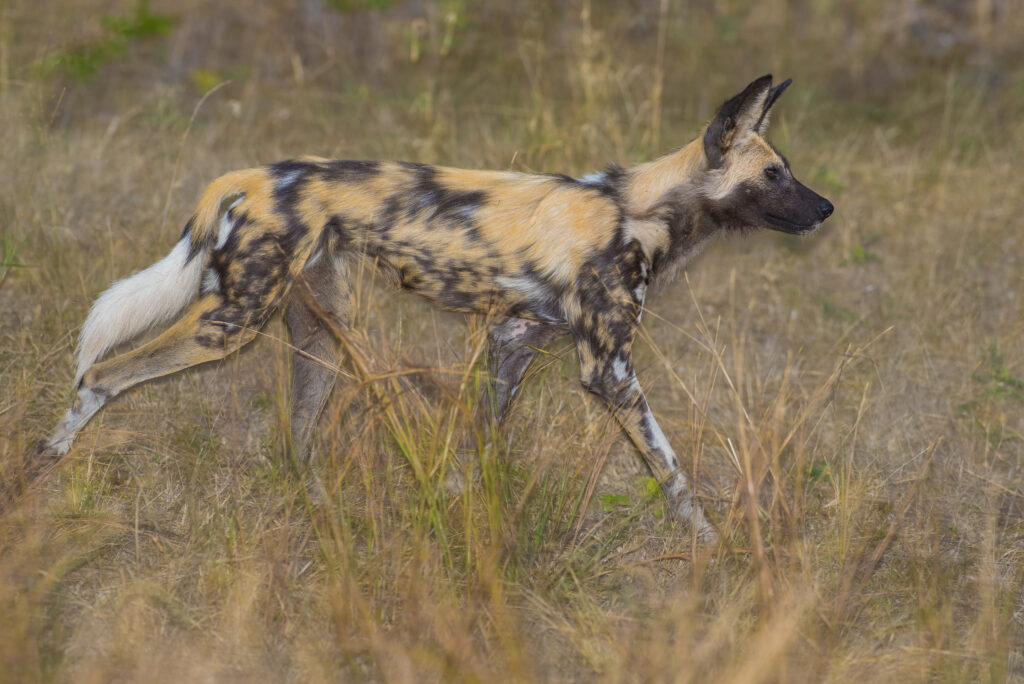
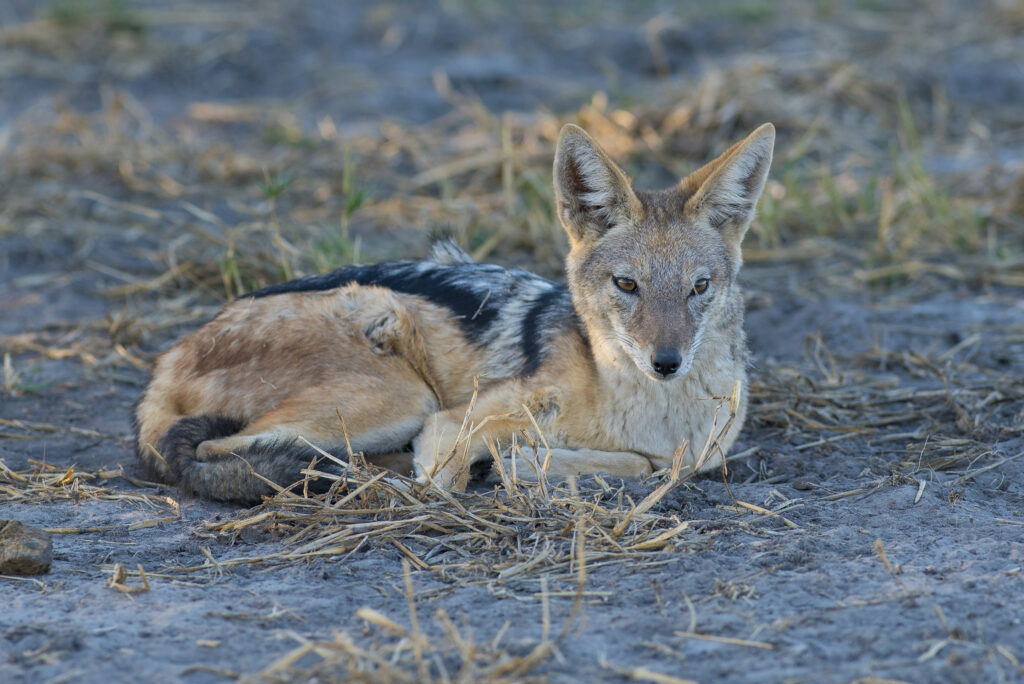
Ruff theories
People and wolves have long had a fractious, complex relationship, ranging from friendship to outright warfare. Dogs were the first animals to be domesticated by humans, and it was long thought that our pets were directly descended from the present-day wolf. However, DNA evidence now points to dogs and wolves evolving from a common ancestral wolf (no fossils so far). This animal went extinct during the last ice age (the Pleistocene), but wolves may have been domesticated a couple of times, in Siberia and Western Europe, with plenty of cross-breeding later on. Those ancient wolves started down the road to dog-hood about 40,000 years ago, although as usual with historical theories, there are no end of opinions on both the exact timing and who begat who.
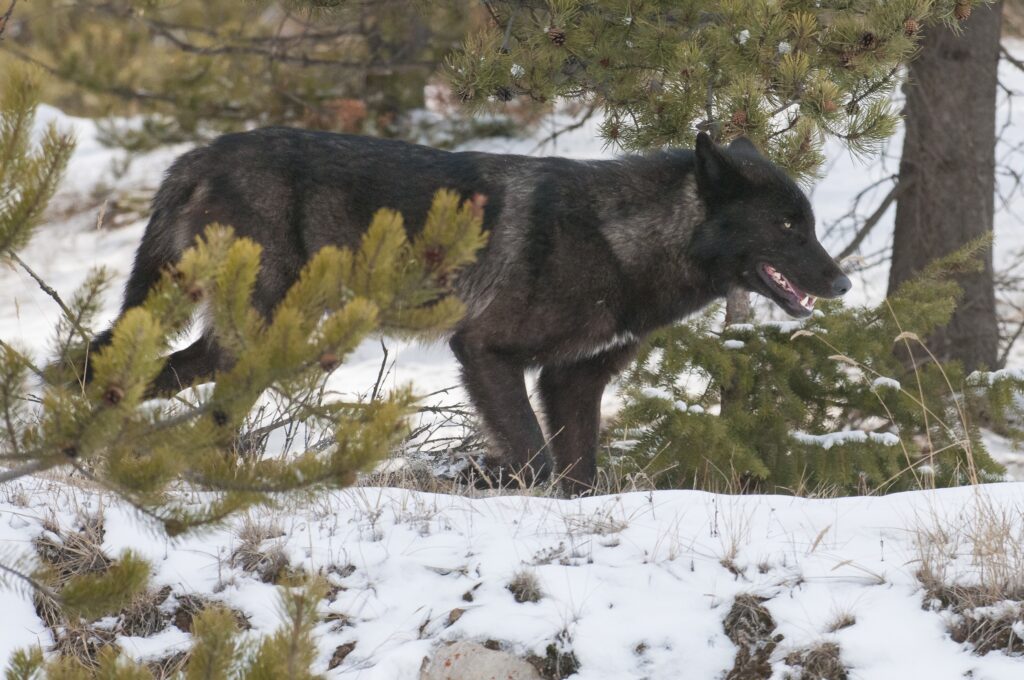
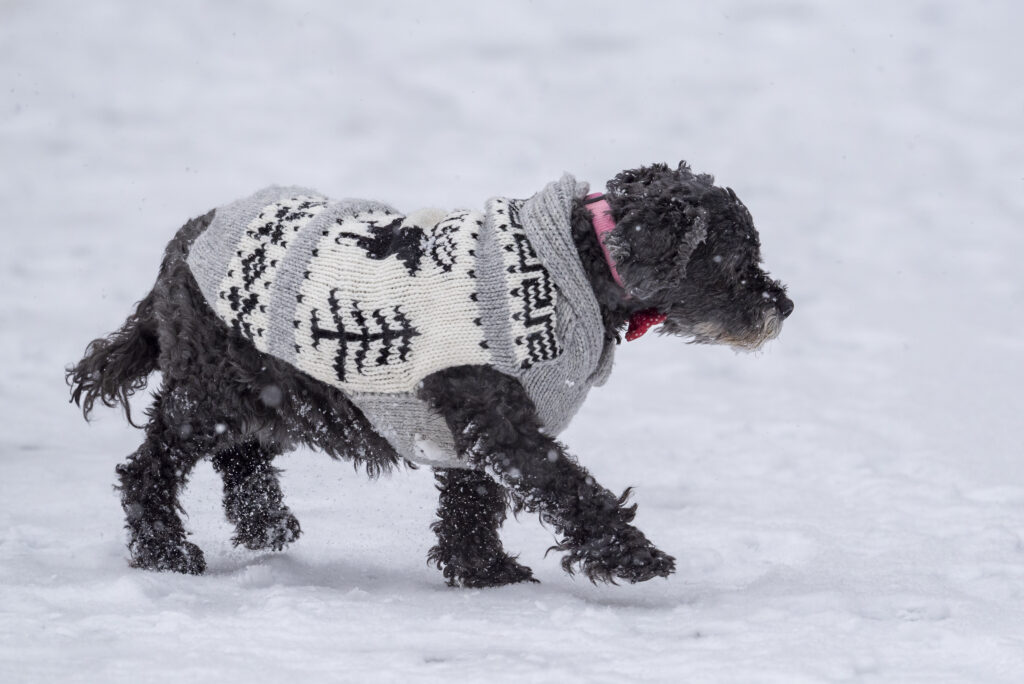
Pack mentality
Wolves are cursorial predators. They don’t lie in wait to ambush prey, instead, they actively roam over a large home range. They do this in packs, chasing their prey down. Generally, a wolf pack consists of a breeding pair, plus their offspring from the past few years; once pups get to about three-years-old they strike out on their own. The pack members may also have specific roles when hunting large prey. The smaller animals may be more involved in “herding” prey into a suitable location and tiring it out, with the slower but larger animals (often males) coming in for the kill during the hunt’s final stages. It is probably this pack cohesion that led to wolves’ domestication—they have a built-in inclination to be cooperative, making them ideal candidates to evolve into human companions which know their place in the “pack.”
Crying wolf
But despite welcoming ancient wolves to their campfires, for centuries, people have also persecuted wolves—first in Europe and Asia, and then when Europeans moved over to North America. Human hunters wanted to eliminate competition for game animals, and farmers wanted to eliminate predatory attacks on their livestock. At least 13 subspecies of wolf have been exterminated since the late 1800s. When I grew up in Thunder Bay, Ontario in the 1960s and 1970s, wolf sightings were as scarce as hens’ teeth, mostly because in the nearly two centuries between 1793 and 1972 there was a province-wide price on their heads. Aerial gunning, as well as a government poisoning program (1956 to 1964), further reduced numbers. Although I spent a fair amount of time roaming the woods in my youth, I saw nary a wolf until I was 15-years-old. In 1974 my father and I were driving a bush road when a large dark wolf loped across the road in front of us. I remember thinking that it was like seeing a unicorn!
Today, practises like bounties and poisoning no longer occur in most parts of Canada, and many wolf populations have recovered. Canadian wolves occupy about 80 percent of their original range and are listed by COSEWIC as “Not at Risk.” In general, the areas where wolves have been exterminated are wherever there are a lot of people or farming. The Alberta (and B.C.) situations are different in that the provincial governments are actively killing wolves to aid in caribou recovery. Also, some Alberta municipalities still offer wolf bounties.

The wolves at our door
The history of wolves in the Jasper area is closely tied to the history of elk, which are often wolves’ main food source. When the park was established in 1908, due to overhunting, there was close to zero elk in the area (a few remained in the back-country). Today, the elk you see around town are the descendants of animals brought in from the U.S. in 1922. After the re-introduction, those U.S. elk bred like rabbits, and a prolonged period of over-abundance began—due in part to the park’s own wolf-killing program which lasted until 1959. By then, wolves had pretty much been eliminated from Jasper’s main valleys, though a few always remained in remote areas.
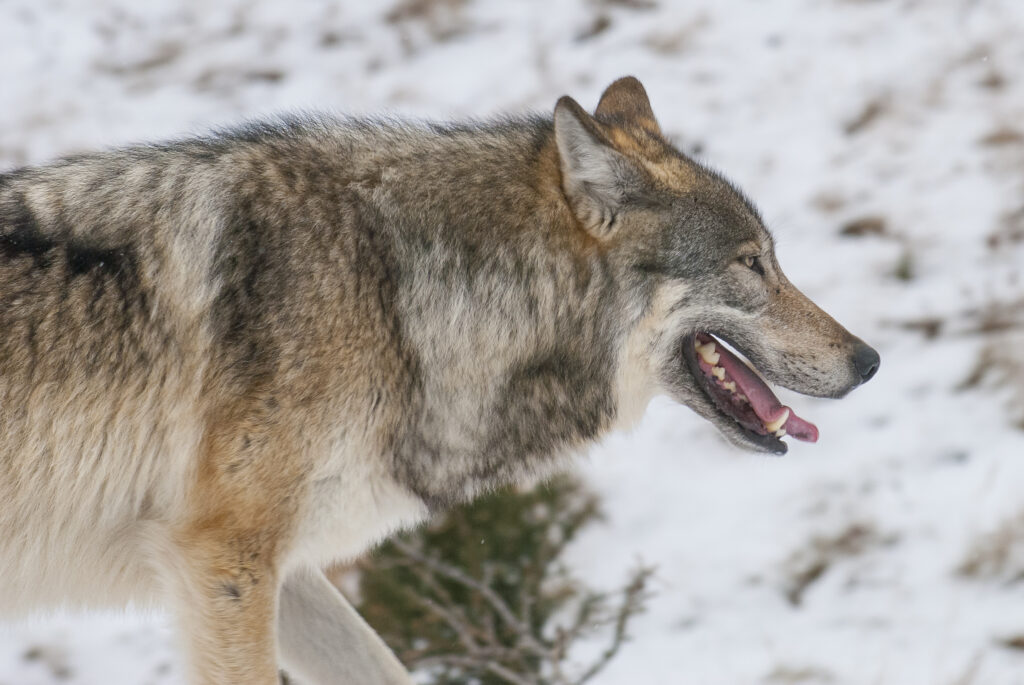
After the wolf culling stopped however, the remaining wolves bellied up to the all-you-can-eat elk buffet and dramatically increased. Then, between 1980 and 2010, due to the combined influence of higher wolf predation and increasing vehicle strikes, elk numbers gradually declined. With their food supply dwindling, wolf numbers followed suit. We now find ourselves in a low-density state for both elk and wolves. Although it is hard to tell, the current elk and wolf population sizes may be more “natural” than anything we’ve seen since the park’s establishment in 1908.
Road warriors
Under most circumstances, wolves are among the most shy and retiring of creatures. They tend to avoid humans; perhaps the evolutionary result of centuries of persecution. Occasionally however, wolves will lose their fear of people, usually because of a non-natural food source. Wolves are not just majestic predators, they also have no qualms about “wolfing down” already dead animals. The number of vehicles on Jasper’s highways has resulted in a lot of road kill – and some wolves have learned to take advantage. Over the years, we have had individual wolves (often older animals), as well as entire packs, that have given in to the temptation of a free lunch, patrolling the highways on a regular basis.
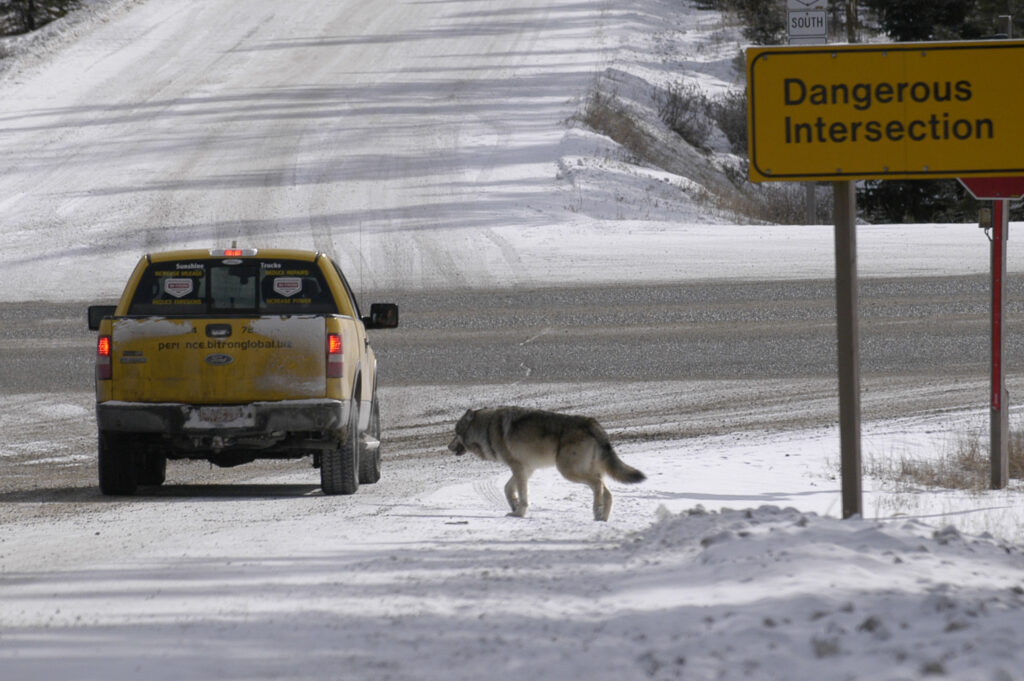
This resulted in overly-bold wolves, which led to some thrilling wolf sightings for Jasperites and tourists alike. Although it’s always exciting to see a wild wolf, sadly, these bold wolves often end up getting hit themselves. The best thing we can do as responsible park users is to obey posted speed limits and report all roadkill to wildlife officials (780-852-6155).
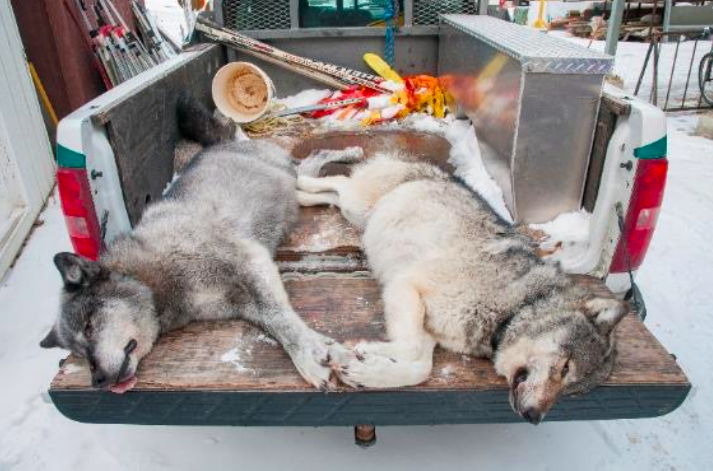
A burning desire
The inclination for wolves to scavenge is what led to one of my most embarrassing (and painful) incidents as a field biologist. It’s important to get a good count of wolves, because they are a major predator of Jasper’s endangered caribou. For most animals, you need expensive surveys and fancy statistics to come up with a good estimate of population size. Wolves, however, are few in number, and in winter they tend to be concentrated along trails and roads in the valley bottoms. Also, packs hold territories, so if you know territory boundaries, you can be more confident of your track counts. Given all this, you can get a pretty accurate count of wolves using just winter snow tracking, remote camera images, radio-collar data, and sightings from the public and parks staff.
During a crisp day in late fall, a co-worker and I were on an unrelated mission, when we got the call that there was a moose carcass in the Sunwapta River. We were told that it was well away from the road and across the river, so off we headed, with the hopes of finding evidence of wolves. When we got to the well-chewed moose remains, it was wolf-free, but just as we were contemplating our next move, a grey wolf sauntered up and started feeding. We needed to identify him if possible (by either a collar or an identifiable coat pattern), so I crouched down to take a photo. Suddenly, I heard a loud ‘PSHHHHHT’ noise. The canister of bear spray in my pocket had accidentally gone off—inside my pants! I knew I should get that spray off me as soon as possible…but I was in the middle of an incredible wolf sighting, plus, I didn’t want to scare the wolf away from his dinner. Eventually, when he had his fill and wandered off, I quickly dropped my pants and waded up to my waist in the river to wash off, much to the amusement of my colleague!
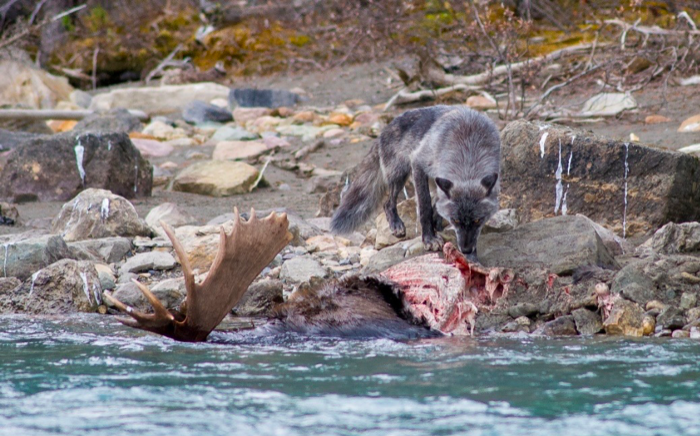
My efforts were not entirely successful: while the initial burning faded somewhat, it came back with a vengeance when I took a hot shower later that night. Such is the power of wolves to inspire—we will endure considerable discomfort for the privilege of watching them.
Mark Bradley // info@thejasperlocal.com


